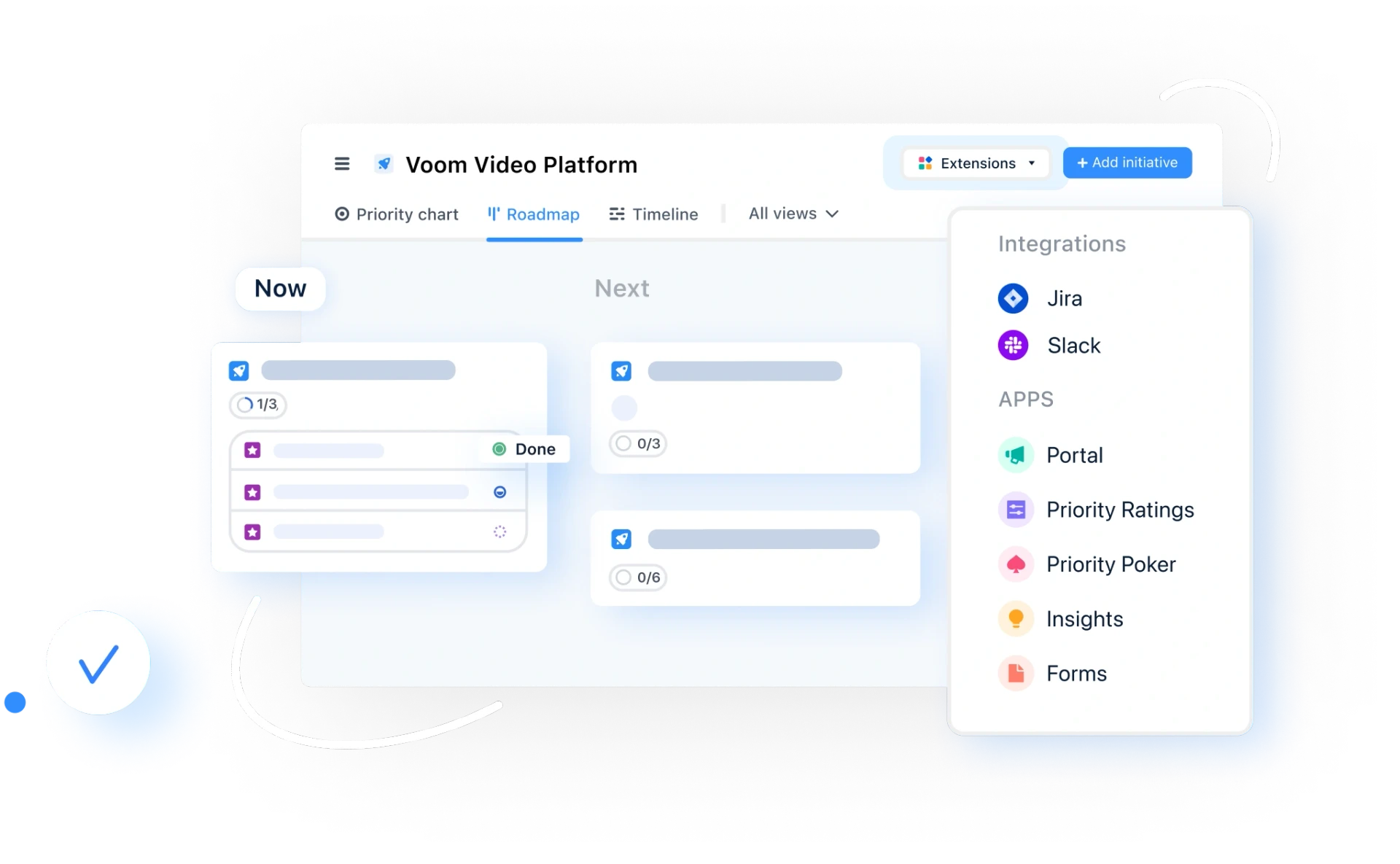How Powell Software reduced product admin time by 20% — with airfocus


Problem
A product org restructure was the catalyst to find a product management tool that would streamline operations, create visibility and alignment both within the team, stakeholders and customers.

Solution
By implementing airfocus, Powell Software were able to centralize their product management processes, creating a single source of truth for roadmaps and customer feedback. Integration with Azure DevOps streamlined their workflow with delivery, while the public portal improved transparency (and their relationship) with customers and stakeholders.
When change knocked on Powell Software’s door, it didn’t just bring challenges – it brought an opportunity. As a trusted SaaS provider helping companies supercharge communication and collaboration through Microsoft 365, Powell knew the power of working better, together. But inside their own walls, things weren’t as connected as they could be.
Teams were building in silos, processes lacked consistency, and product roadmaps were scattered across outdated slide decks. Customer feedback? It lived everywhere and nowhere at once. The moment was clear: it was time to hit pause, take stock, and reimagine how the product team could align, adapt, and thrive as they went through an organizational restructure.
The challenge
Following organisational changes at Powell Software, the product team had the opportunity to audit its needs, and future-proof their systems. Paul Lefevre, Product Manager at Powell Software, led the team in identifying key challenges:
Siloed teams with inconsistent processes: "We were not working that well across the two main teams," explains Paul Lefevre, Product Manager at Powell Software. "We had very different ways of working, and we were not talking much about our processes."
Ineffective roadmap communication: "We had PowerPoint decks everywhere in the company that weren't being updated," says Paul. "Sales people were having their own presentations, so we didn't have a clear message or a clear roadmap communication."
Fragmented feedback management: "Customer feedback was scattered across multiple platforms," adds Paul. "We had an external platform where customers could provide feedback directly, but it wasn't really owned by any team in the company." In practice, this meant customers were simply not getting responses to feedback.
Furthermore, teams would sometimes artificially inflate the importance of feature requests. "We were losing information because people wanted to get their new feature into the roadmap.”
Why airfocus?
Paul knew that product management software could provide them with the roadmapping, priority planning and customer feedback management tools they needed to effectively address their challenges – and chose airfocus for several key reasons.
1. Ease of use. The intuitive interface allowed the team to set up quickly with minimal support. "It was easy to convince people internally," Paul recalls, "because they saw the value immediately."
2. Visual prioritization. "The view with the graph, where you can see the impact and which feature can be strategic or a time-waster, was really convincing," Paul recalls.
3. Public portal. The ability to create a customizable, external-facing roadmap with detailed feature descriptions represented a significant improvement over the company's previous approach.
4. Integration capabilities. "I think if the Azure DevOps integration hadn't been available, we wouldn't have chosen airfocus, because we didn't want to do the job twice," Paul explains.
How airfocus changed the way Powell Software works
Implementing airfocus transformed Powell Software's product management across three key areas.
1. Data-driven roadmap management
The team uses the RICE prioritization framework within airfocus to make objective decisions about feature development. "Now that we can record the amount of feedback, the range of topics, and the technical challenges of realizing new features, we no longer have to argue about why this feature or that didn't come first," Paul explains.
2. Centralized feedback management
Powell Software now consolidates customer feedback from multiple sources.
Zendesk integration
automatically imports support tickets tagged as feature requests
The airfocus portal
allows customers to submit feedback directly
CSM team feedback
is being integrated to close the feedback loop
"We've brought the different sources of feedback into a single platform for us as product managers," Paul notes. "This makes it easier to identify patterns and prioritize changes based on real customer needs."
3. Unified roadmap communication
The public portal now provides a single source of truth for roadmap information, both internally and externally. "Before, in our roadmap communications, there were not a lot of details about what the feature would do," Paul reflects. "We had only a feature title, so customers and sales people might think a feature was going to do something different than what we had in mind."
Now with the portal, team members can add descriptions and mockups, creating clarity and alignment across the organization and with customers. This has dramatically reduced misunderstandings and improved trust.
Overall, the implementation of airfocus has delivered significant benefits. "We've saved half a day per week per product manager," reveals Paul. "And it's not only the product managers, but also the other teams that are saving time. Plus our decisions are better now. We're better at addressing customer pain points, and we have more time to deep-dive into specific requests.
4. Building trust in the product org
Paul Lefevre was the single internal advocate for airfocus. “I think an achievement for me is to have convinced everyone internally to use the solution – and to have it adopted by the other product managers. It’s made the product team shine internally.”
Want to save this case study? Download the full PDF now.
Experience the new way of doing product management

